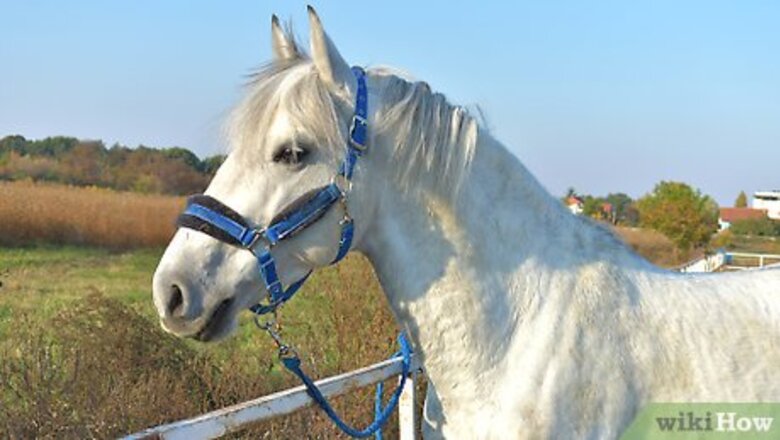
views
Preparing to Tack Up a Horse
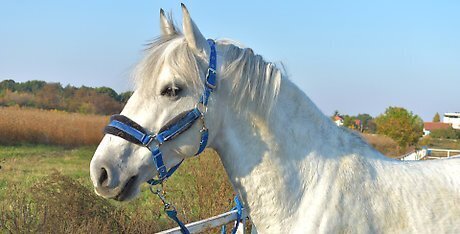
Tie up your horse. When you are preparing to tack up your horse, you should make sure it is tied up so that it can't get away from you. Many people put a halter [or head collar if your British] on the horse, then attach cross ties to it. Although, many people use a slip release knot. Make sure the metal clasp that attaches to your horse’s halter or the part that attaches to the wall is a quick release such as with a panic snap. Using this instead of a snap hook ensures that your horse can get loose if it panics and gets caught. If you tie your horse with a lead rope, it's always a good idea to do a quick-release, or slip knot, so that you can take it off quickly in case of emergency. Don't use the horse's bridle to tie it up while you are tacking it up. This should be put on your horse before you put on the saddle.
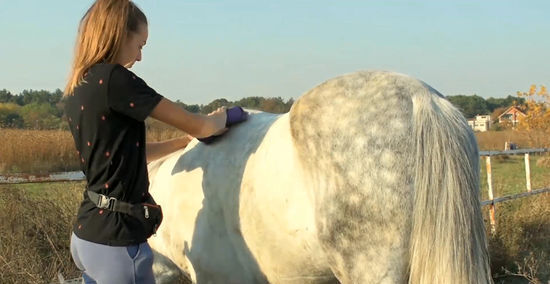
Groom the horse. Ideally you should do a full grooming, which includes both brushing the horse and picking out the feet with a hoof pick. However, at the very least you should make sure that you thoroughly groom the areas where the saddle and girth go. If you don't, it will irritate the horse. When you pick your horse's hooves, face the hind end of the horse and bring the horse's hoof up to you in order to lessen the risk of being kicked and protect your knees. Grooming a horse before tacking it up will help assure that the horse doesn't get saddle sores or other pain caused by excessive loose hair or dirt. As you groom, check the horse for lumps, bumps, swelling, and heat that could mean your horse is unfit to ride.
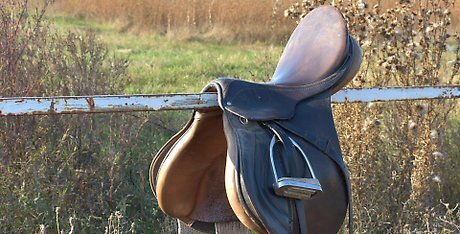
Prepare your tack. Before tacking up, make sure you have all equipment nearby and that it is in good condition. Having all your supplies within arm's reach will make tacking up your horse easier and quicker than if you have to search for pieces as you go. Place the stirrup and cinch that will be on the far side of the horse up on top of the saddle. This will make it so they don't hit the horse when you place the saddle on its body. You can cross the stirrups over the top of the saddle to keep them out of they way until you are ready to mount the horse. But this is optional, you could also ‘run up’ your stirrups by sliding the stirrup up the leather strap (stirrup leather) and then putting the stirrup leather through the middle of the main stirrup part
Putting on the Saddle
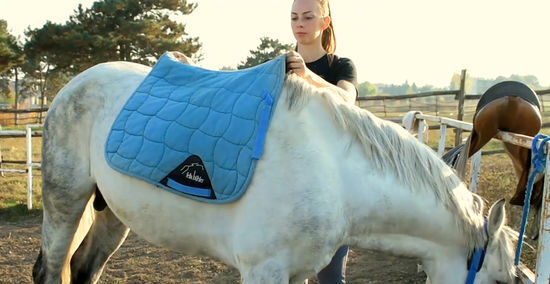
Put pads on the horse. Have your veterinarian or a professional saddle fitter help you fit your saddle to your horse to see how much padding they need. Use a saddle pad, a blanket or cloth, or a foam pad, depending on your specific type of tack. Place the front of the pad at the front on the horse's withers. The withers are located where the top part of the animal's shoulder blades meet the animal's neck, typically at the base of where the mane stops growing. You want to place the pad a bit higher than the withers at first. Once it's placed, slide it down a bit so the horse's hair will not be pushed down in an unnatural position. If you are riding on a western saddle, you will want a thicker saddle pad than you would use with an English saddle since the Western saddles tend to be heavier and have more components. If you are riding with an English saddle, you may want to place both a regular saddle blanket and an English pad on the horse for added cushioning. Put the pads, and the saddle, on from the same side that you mount the horse, which is usually the left side. The horse will be more used to activity on that side of its body.
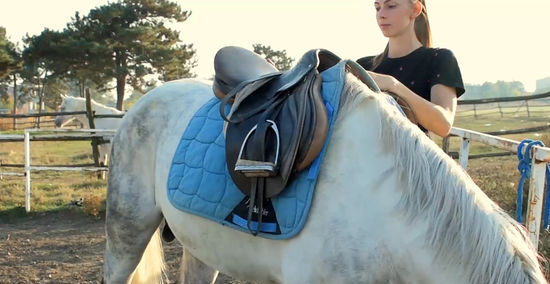
Place the saddle on the horse's back. Lift the saddle up and place it on the horse's back gently. The saddle should sit in the middle of the saddle pad. If it is sitting correctly on the pad, there will be a thin strip of the saddle pad in front of the saddle. If you are riding English, lift the top of the pad into place so that it is in contact with the underside of the pommel. It should look like there is a little tenting. It's easiest to lift both the front of the blanket and saddle up, so they can come down gently from a few centimeters above the withers. Once you place the saddle on the horse's back, you should take the time to adjust its location on the horse's back before moving forward with tacking.

Put on the horse's girth. The horse's saddle is connected under its body with a strap called a girth. Attach it to the right side of the saddle first, move to the left side of the horse, and then pull it under the animal's body and attach it to the left side of the saddle. The girth should be attached in the first and third billet straps if you are using an English saddle. Some horses are "girthy," meaning they don't like their girth being tightened. They may attempt to bite you when you tighten their girth, so be cautious about this. If you are using a breast strap, or rear cinch, now is the time to position them as well.
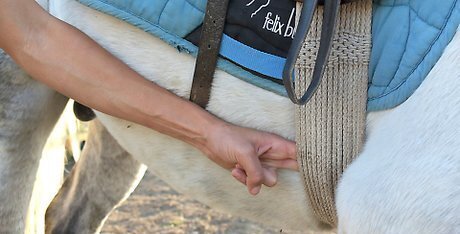
Make sure the girth is tight enough. Ideally, you should have the girth about 3/4 as tight as you prefer it when you first tighten it. Then move your horse a few steps steps, forward or back. Next, tighten the girth gradually once again. As a general rule, your girth should be tight enough so that you can fit 2 fingers under it but the saddle won't move easily. Always tighten the girth again once you have warmed up, as horses tend to puff their stomach out when being tacked up. Remember to check the tightness of the girth right before mounting.
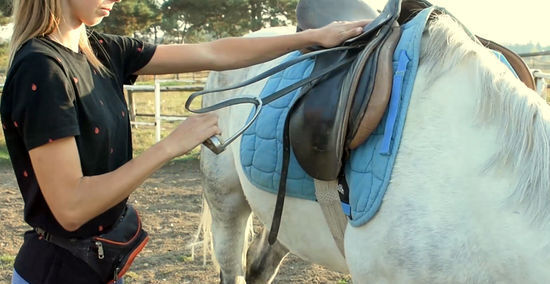
Adjust your stirrups. Once the saddle is on and secured you can adjust the stirrups to the proper length. For most general riding, they should be as long as the distance from your fingertips to your armpit. If you are going to be riding in 2-point position, meaning you will be in a crouched position with your rear end off the saddle, then the stirrups need to be a bit shorter. If the stirrup bar is an old type, it may be hinged to lock the stirrup in place. Always keep it down to help prevent being dragged.
Putting on Additional Items
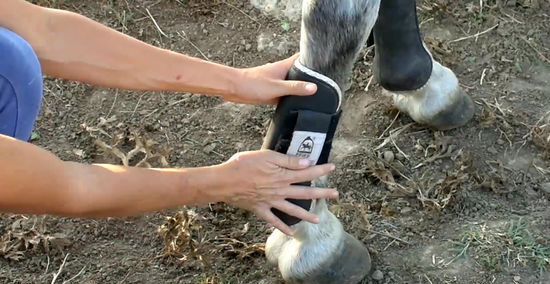
Wrap your horse's legs. You may want to wrap your horse's legs if you plan on exercising the animal or if it needs some extra support. You can wrap the legs with polo wrap or boots. What you choose depends on your horse's needs and the supplies that you have. Before wrapping make sure the area you are going to wrap is clean and dry. Then wrap the horse's leg starting below its knee and covering its ankles and cannon bones. Make sure the strap of the boot goes from the inside of the horse's leg, wrapping around the front, so the end of the strap is facing backwards on the outside of the leg. Make sure the pressure is even throughout the wrap and that they are clean and free of mud or hair.
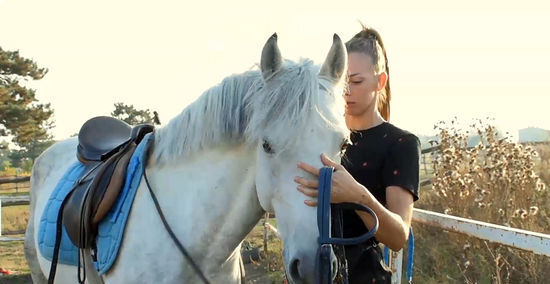
Place the reins on the horse. Unbuckle the cross ties and put the reins over the horse's head. This is so they don't get tangled in all the other straps on the bridle. The reins will ensure that you will always have control over the horse. When you attach the reins, always make sure the clips are facing outwards. Having them facing outward will make it so the clips don't rub against your horse's mouth.
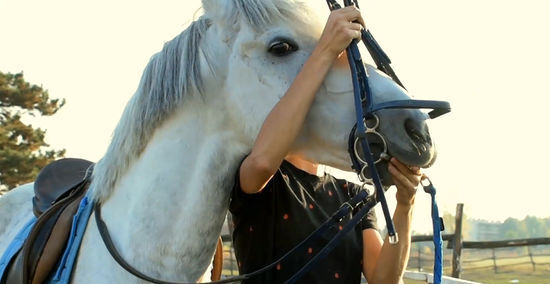
Put the bit in the horse's mouth. Hold the crown, noseband, and throatlatch in your right hand so they are out of the way. Offer the bit into the horse's mouth. Put a finger on each side of the bit and gently push against the horse's mouth. If the horse does not take in the bit, it is a good idea to put your thumb in the very corner of the horse's mouth where there are no teeth and push on the horse's tongue. To help a shy horse take the bit, put a little honey or peppermint oil on it. Then praise them each time they take the bit to help them get used to it. Make sure that when putting the bit in the horse's mouth, you do not hit the horse's teeth, or they will become sour to the bit. Also, in the winter, be sure to warm the bit so the horse will not become bit-shy.

Place the bridle on the horse. Put the crown or headpiece of the bridle over the horse's ears. Some people put it on the farthest ear first, so the ear nearest will easily slide under. When it is placed correctly, the headstall of the bridle should be behind the ears, and the brow band should be in front of the ears.
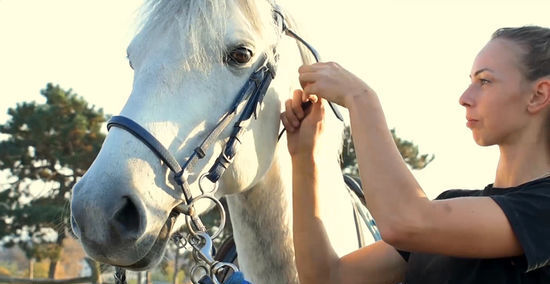
Buckle the throat latch and noseband. To attach the bridle you will need to do up the throat latch under the horse's throat. You will also need to buckle the nose band, if the horse wears one, which goes across the horse's snout, between its nostrils and its eyes. Most nose bands should be tucked under the bridge rings and not in the horse's mouth. Together, these hold the bridle in place. When you buckle the throat latch, you should be able to fit 4 fingers in between the horse and the throat latch. You should be able to fit 2 to 3 fingers under the nose band when you buckle it. To buckle a ‘Flash’ nose band, you need to bring it around the horse’s muzzle, in front of and not touching the bit, and then do the buckle under the horses face, making sure it isn’t too tight.

















Comments
0 comment